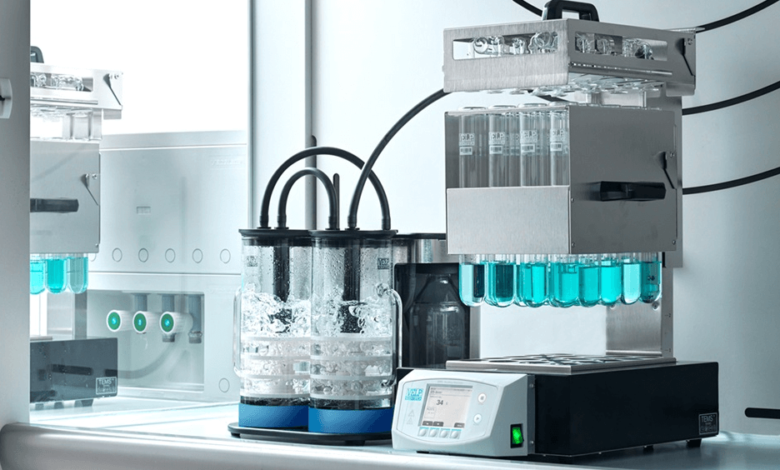Revolutionizing Laboratory Analysis with the Automatic Kjeldahl Nitrogen Analyzer

In modern laboratories where speed, accuracy, and consistency are critical, automation has transformed how analytical chemistry is conducted. One area where this transformation is especially evident is nitrogen analysis. Traditionally reliant on manual operations, the Kjeldahl method has now been elevated by the introduction of the automatic kjeldahl nitrogen analyzer, a sophisticated device that combines classical methodology with 21st-century efficiency.
This article will explore the origins and science behind the automatic kjeldahl nitrogen analyzer, its core components, its significant role across industries, and how it brings unmatched value to laboratories aiming to meet both regulatory and operational excellence.
A Brief Look Back: The Kjeldahl Method
Before diving into automation, it’s worth understanding the roots of nitrogen analysis. The Kjeldahl method, introduced in 1883 by Danish chemist Johan Kjeldahl, became the gold standard for measuring nitrogen content in organic substances. The technique was groundbreaking because of its accuracy in estimating protein levels—essential in fields such as food production, agriculture, and pharmaceuticals.
The process involved three key stages:
- Digestion of the sample in sulfuric acid with a catalyst to convert nitrogen into ammonium sulfate.
- Distillation of the ammonia released after alkalizing the digest.
- Titration to quantify the ammonia, which reflects the nitrogen content in the sample.
While effective, this method was labor-intensive and required careful handling of corrosive chemicals and precise timing, making it vulnerable to human error.
See also: Estate Management London and Why It Matters with Uniq Block Management
Enter the Automatic Kjeldahl Nitrogen Analyzer
To overcome the limitations of manual analysis, the automatic kjeldahl nitrogen analyzer was developed. This modern instrument automates the entire Kjeldahl process—from sample digestion to data output—resulting in faster, safer, and more accurate testing.
What sets it apart is the integration of:
- Auto-digestion systems with programmable heating and safety covers
- Automatic distillation units that handle sample transfers and reagent addition
- Built-in titrators with software-calculated results
- Digital interfaces for real-time monitoring and reporting
With automation, laboratories can increase throughput, reduce the need for constant operator supervision, and improve repeatability across multiple tests.
Key Components of an Automatic Kjeldahl Nitrogen Analyzer
Though configurations may vary by manufacturer, a typical automatic kjeldahl nitrogen analyzer includes:
1. Digestion Unit
A programmable heating block that allows simultaneous digestion of multiple samples. Features like temperature ramps and timers help ensure reproducibility.
2. Distillation Module
Once digestion is complete, the digested solution is automatically treated with alkali and distilled. This closed system improves safety by containing vapors and minimizing acid exposure.
3. Titration System
An onboard titrator performs real-time acid-base titration to measure the amount of ammonia, which correlates to nitrogen content. It can automatically calculate the percentage based on input sample weight.
4. User Interface & Software
A touch screen or computer-based control system enables users to program, monitor, and store data. Some systems support data export and LIMS (Laboratory Information Management System) integration.
Major Advantages of the Automatic Kjeldahl Nitrogen Analyzer
The transition from manual to automated systems provides numerous advantages:
✅ Improved Accuracy and Reproducibility
Automation ensures that heating, reagent addition, and titration are performed uniformly, which significantly reduces variability and human-induced error.
✅ Enhanced Safety
Acid digestion and ammonia distillation pose safety risks in manual setups. Automatic units include fume hoods, neutralization systems, and sealed chambers to protect lab personnel.
✅ High Sample Throughput
Some models allow batch digestion of 12–40 samples, making them ideal for commercial labs or large-scale food manufacturers.
✅ Labor and Time Savings
Once samples are loaded, technicians can focus on other tasks while the system completes the analysis autonomously.
✅ Compliance with Global Standards
The automatic kjeldahl nitrogen analyzer supports methods approved by organizations like AOAC, ISO, and EPA—making it suitable for official testing and certifications.
Common Applications Across Industries
The versatility of the automatic kjeldahl nitrogen analyzer has made it indispensable across a variety of sectors:
🧀 Food Industry
- Protein Measurement: Especially vital for dairy, meat, bakery, and beverage products.
- Nutritional Labeling: Accurate protein values must be printed on product packaging, which demands precise nitrogen testing.
- Raw Material Validation: Ensures ingredient quality and batch consistency.
🌱 Agriculture and Fertilizers
- Soil and Crop Testing: Helps farmers and agronomists measure nitrogen levels in soil and crops.
- Fertilizer Quality Control: Confirms that nitrogen levels match manufacturer specifications, essential for effective crop yields.
💊 Pharmaceuticals
- Compound Analysis: Many drugs and active ingredients contain nitrogen. Automated testing confirms their purity and concentration.
- Production Monitoring: Ensures each batch meets regulatory criteria for nitrogen-based substances.
🌍 Environmental Testing
- Water Quality Monitoring: High nitrogen levels can indicate pollution in rivers and lakes.
- Waste Management: Tracks nitrogen content in industrial discharge and wastewater treatment facilities.
How to Choose the Right Automatic Kjeldahl Nitrogen Analyzer
Selecting the best system depends on a lab’s workload, budget, and required features. Consider the following factors:
- Sample Throughput: High-volume labs should invest in systems with batch digestion and rapid distillation cycles.
- Level of Automation: Some analyzers automate only part of the process, while others handle digestion, distillation, titration, and even result calculation.
- Data Integration: Systems with software connectivity and cloud integration help in regulatory reporting and data backup.
- Maintenance and Support: Choose a supplier that offers strong after-sales service and technical support.
- Footprint and Power Consumption: For smaller labs, a compact, energy-efficient model may be more suitable.
Maintenance and Best Practices
To ensure longevity and performance of your automatic kjeldahl nitrogen analyzer, adhere to the following maintenance tips:
- Clean Components Daily: Prevent reagent buildup in tubing, nozzles, and distillation chambers.
- Use Fresh Reagents: Old or contaminated acids and bases can compromise accuracy.
- Calibrate Regularly: Periodically check the system with certified reference materials.
- Train Users: Proper operation is crucial for safety and efficiency.
- Update Software: Keep firmware and software tools up to date for best performance and new features.
Top Manufacturers in the Market
Leading manufacturers of automatic kjeldahl nitrogen analyzer units include:
- VELP Scientifica – Known for their compact, intuitive, and energy-efficient systems.
- BÜCHI Labortechnik – Offers modular systems with advanced automation and safety features.
- FOSS – Specializes in large-scale analyzers for food and feed industries.
- Labconco – Offers user-friendly models with excellent safety integrations.
- Drawell – An emerging name offering high-performance analyzers at competitive prices.
Each of these brands provides solutions tailored for specific industries and operational scales.
Final Thoughts
In an age where precision and speed are vital to scientific progress and product integrity, the automatic kjeldahl analyzer offers laboratories a robust and reliable solution. It blends the time-tested accuracy of the Kjeldahl method with modern automation, making it an essential tool for professionals in food safety, agriculture, pharmaceuticals, and environmental science.
By minimizing manual steps, improving safety, and delivering reproducible results, this instrument doesn’t just simplify analysis—it redefines it. Whether you’re setting up a new lab or upgrading outdated equipment, an automatic kjeldahl nitrogen analyzer is a smart, forward-thinking investment.







